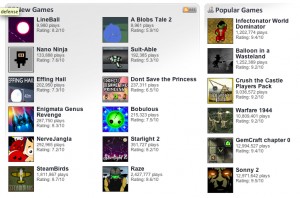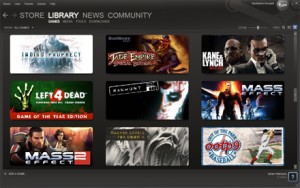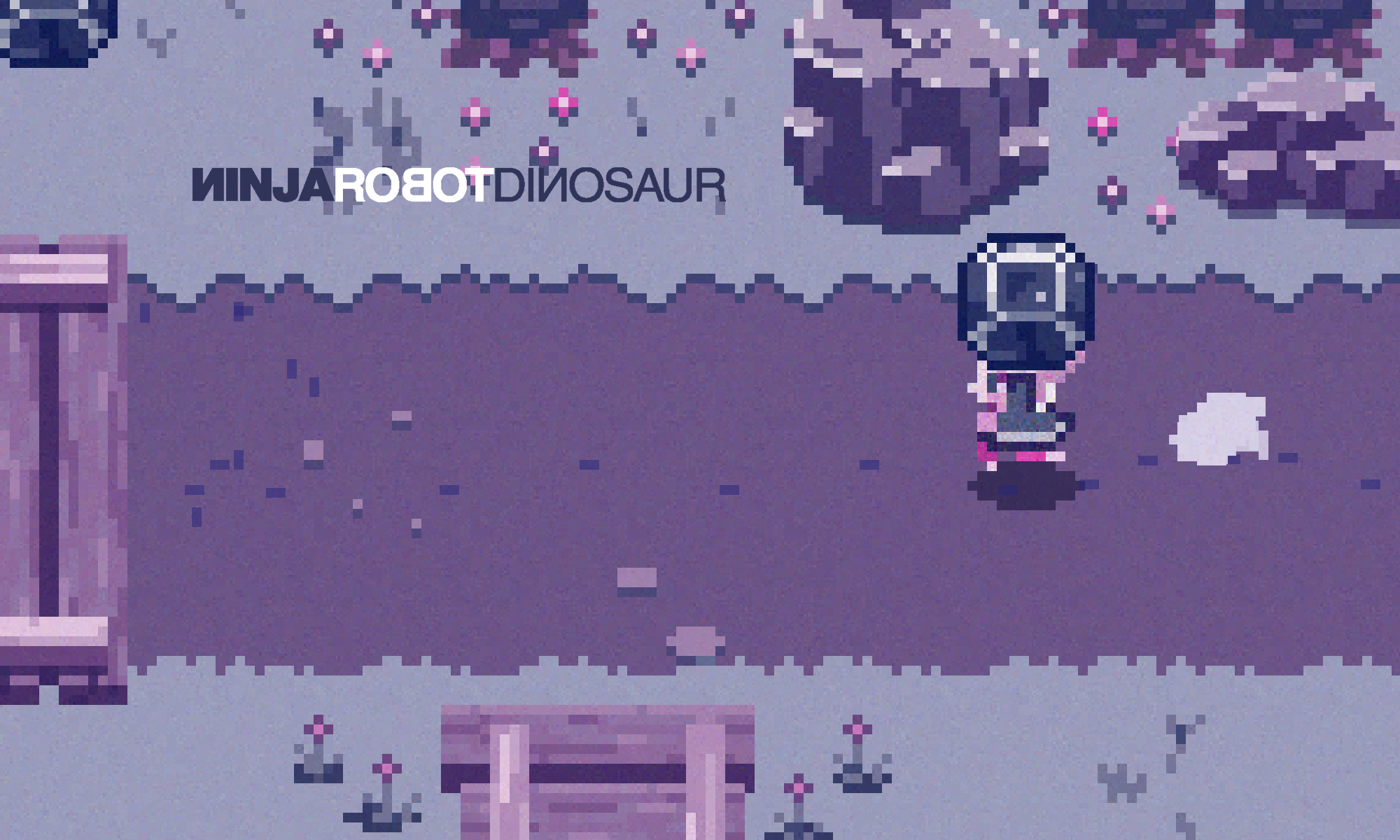Branding is extremely in the entertainment world.
A solid brand will give your game an established identity. That identity will help your players relate to the game. That relationship will give your game legs and make it easier for players to spread the word about your game. As a result your game will have more players and have a greater chance of becoming a franchise upon which other games can be built.
Many will say that you can’t have a successful piece of entertainment without effective branding.
While everyone can recognize that branding is important in the traditional gaming world, branding in the Flash world is not so black and white. The primary reason for this is that in most cases, the only tools you have to sell your game are a thumbnail image and the game’s name.

To stand out from on the crowded landing/search pages on Flash portals, a Flash game needs solid branding.
How do we go about building a brand when the limitations of the portals are considered?
A brand needs to communicate a lot of things to the player:
What is the genre? What does the player do? Is it familiar to other games I may have played?
What is the setting? When and where does the game take place? Is it sci-fi, zombie apocalypse or swords and sorcery fantasy?
What is the tone? Is it gritty or funny? Is a game for adults or kids?
That is a HECK of a lot of information to get across with nothing more than a name and a thumbnail.
I believe that this is why so many successful Flash games take the “literal” titles route. Crush The Castle, This is the Only Level, Epic Fantasy Battle 2 and Warfare 1944 are just a few of the games that have received incredible success by putting a ‘literal title’ on their game.
These games are successful because they make the most of the communication opportunities that the portals offer them. People know that they are going to crush castles in Crush The Castle, play on one level in This is the Only Level, have fantasy RPG combat in Epic Fantasy Battle 2 and play a WWII strategy game in Warfare 1944.
The risk these games take with literal titles is twofold:
First, it’s easy for the player to forget the title, or confuse it with another game. Most people I know who have played Crush the Castle or This Is the Only Level will call them ‘The castle physics game’ and ‘the elephant puzzle game’. This ‘brand confusion’ is considered a huge problem in the traditional world of marketing. Consumers find it difficult to differentiate between brands and are less likely to return to your brand.
The second concern is the ability to defend your copyright. If someone comes out with ‘Smash The Castle’, ‘No Other Level’, ‘Legendary Fantasy Fight 2’ and ‘Warfare 1943’, it will be difficult for you to defend yourself. Without a distinct brand, you must rely on the scruples of the industry to stand by the original game and ignore clones (good luck!)
If going with a literal title is so risky, why not go with a unique branded identity? This is how the traditional entertainment industry does it, but they have a few advantages over Flash games:
– A great trailer/promotional network make informative brand-building trailers and PR junkets are established and reach the target markets, wherever they may be.
– Marketing budgets that put the brand in front of the target market (Remember seeing Assassin’s Creed in the middle of the Octagon in UFC fights a couple of years ago?)
– Shelf space, large posters and larger images in the digital distribution networks.

It’s very hard to build a brand off of that little thumbnail with little or no marketing budget to increase awareness.
Developers have successfully crossed this line and come out with a unique brand that successfully communicates what their game is about. SteamBirds is a recent and fantastic example of building a successful brand.
Through the color scheme of military green and the airplane imagery, you can guess it’s a war game where you pilot a plane. From the name itself and font choice in the logo, you can guess it takes place in a steampunk setting.
Cool – SteamBirds is a steampunk airplane war game. It could have just as easily been called “Airplane War” but SteamBirds gives the game an identity. (It was actually called ‘SexyPlane’ early in development)
Many other games have achieved success with a brand built for the Flash portal market. Morningstar, the Bloons franchise, Stormwinds, and The Siege of Theldale all have informative and unique brands well suited for the Flash Portal Market.
Then you also have games like Sonny and Balloon in a Wasteland – both of which have ambiguous titles and images that don’t do the best job describing their gameplay (RPG and defense respectively). These games have brands that are similar to traditional entertainment brands. Yet, without a big marketing budget, both have achieved a tremendous level of success.
The images for these games are unique and probably contributed to pulling players in, but the other element that is much more important than branding is quality, especially in the Flash portal market.
Every great portal has an effective and well-used method for rating, reviewing and recommending games (recommendation still has a LONG way to go, but it’s getting better).
I believe that both Sonny and Balloons in a Wasteland achieved their success based on the quality of the games and the brand is the wrapper for a great game. I also believe that both games would have been even more successful with a little bit of extra effort on the branding side.
Branding in the world of Flash Portals (and social networks) is different from almost all other entertainment mediums and the rules are still being defined and refined on a daily basis.
When you launch your next Flash game, spend a little bit of time thinking about how people will discover your game on the portals and hopefully you will have the next SteamBirds and not the next “Roboshooter”, “StickSniper” or “________ the ________” game.
Flash Tactics #1 – The Most Accessible Gaming Platform in the World
Flash Tactics #2 – Making Money From a Free Flash Game





2 Replies to “Flash Tactics #3 – The Challenge of Branding Flash Games”